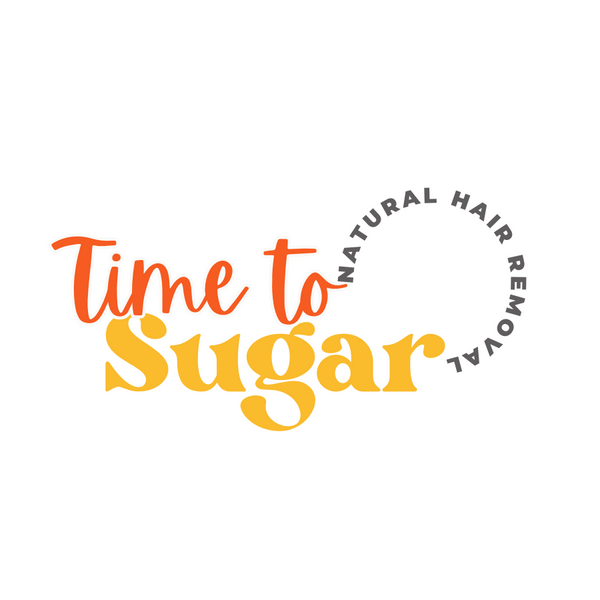F.A.Q/ Troubleshooting
F.A.Q
Help! My Sugar Paste Won’t Stick! 🤯
No grip? No problem! Here’s how to fix it:
- Keep it dry → Sugar doesn’t like water, so make sure your skin is moisture-free. A light dusting of body powder helps!
- Technique matters → Apply the sugar paste with the tips of your fingers in the opposite direction of hair growth, molding it a few times before flicking.
- Check the hair length → Stubble might be too short—wait a few days for better results.
- Warm it up → Knead the sugar paste to soften it, or microwave in 5-second bursts (don't make it hot!). Just don’t overheat it—your skin will thank you!
Try these tips, and get ready for that smooth, sweet finish! 🍯✨
Where Can I Use Time To Sugar Sugaring Paste? ✨
Anywhere you'd normally remove hair! Just make sure your skin is dry, as sugar doesn’t like moisture—a light dusting of body powder helps.
Ready to get started? 🍯✨
What's the difference between the firm and soft paste?
- Firm Paste: Designed for strip-free sugaring. You apply it with your fingers, remove it by hand, and reuse the same ball of sugar until it's full of hair. Ideal for experienced users who prefer full control and for large areas.
- Soft Paste: Applied with a spatula and removed using strips. Its softer texture makes it easier to work with—perfect for beginners or those new to sugaring. Using a spatula gives you more control and precision—especially useful for facial areas.
✨ Both formulas are equally effective: same skin-loving ingredients, same smooth results. Just choose the texture that suits your technique.
Why Am I Bruising?
Bruising happens when the skin isn’t held tight enough during sugaring. If you pull up on the skin while flicking, it creates tension that leads to bruising. Instead, keep the skin stretched and firm before flicking to avoid this.
- Don’t lift, just stretch → Hold the skin tight, but keep it flat.
- Flick quickly and parallel to the skin → A smooth, confident flick prevents bruising.
With the right technique, bruising won’t be an issue! 🍯✨
Help! My Sugar Paste Is Too Sticky!
Sugaring can get a little sticky but that’s part of the learning process! Here’s how to regain control:
- Understand the texture → Sugar paste changes with temperature—when it’s warm, it gets stickier; when it’s cool, it firms up. Pay attention to how it feels as you work!
- Use an applicator ( spatula, butter knife etc) → Hands give off heat, which can soften the paste too quickly. Using a spatula helps maintain the right consistency.
- Cool it down → If your sugar paste is melting too fast, place it on in the fridge for 10-15 minutes before your session to firm it up without overcooling.
Play around with your paste and get familiar with its different stages—it’ll get easier with practice! 🍯✨
How Do I Re-Soften My Sugar Paste?🍯✨
Sugar paste is sensitive to temperature and moisture—when warm, it gets softer; when cold, it firms up. If yours isn’t the right consistency, here’s how to adjust it:
- Firm Paste? Just Stretch It! → Knead and stretch it with your fingers—the warmth of your hands will soften it naturally.
- Soft Paste? Warm It Up Gently → Microwave for 5 seconds at a time, checking until it’s easy to work with. It should never be hot—just soft enough to spread.
With these simple tricks, your sugar paste will be ready to go! 🍯✨
Does sugaring hurt?
Does sugaring hurt?
Many people find sugaring gentler than waxing since it only adheres to hair, not live skin. Pain tolerance varies, but discomfort tends to be quick and manageable. Regular sugaring can make future sessions even easier!
Exfoliating beforehand and keeping your skin hydrated can help ensure a smooth experience.
How do I clean up sugar residues?
Sugaring paste is water-soluble, making cleanup quick and effortless—just rinse with warm water, and any residue dissolves instantly. A damp cloth works well, too!
Unlike traditional waxes that require oils or special removers, sugaring washes away easily with no sticky mess left behind.
Do I need strips with a firm sugaring paste?
Firm sugaring paste is designed for hand application—no strips needed! It’s molded onto the skin and flicked off using just the hands.
However, for those whose skin tends to be naturally warmer or moister, a spatula or dull tool can help apply and remove the paste more easily. If the sugar becomes too sticky or full of hairs, or if you’re still learning the technique, a cotton strip can be used to lift the paste more effectively.
How long do sugaring results last?
Hair regrowth after sugaring is usually minimal to none for at least two weeks. Areas with higher blood flow tend to see faster regrowth.
Consistency makes a difference! Sticking to regular sugaring without shaving in between helps hair grow back thinner and sparser over time.
